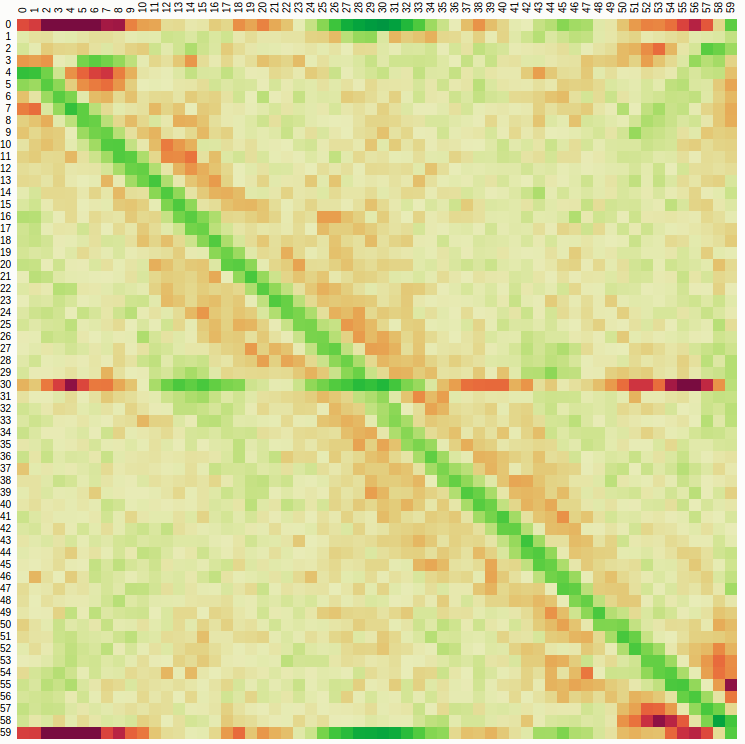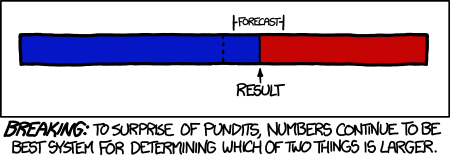Table of Contents
Probability / Randomness
Car accidents nearby home
Of course they're more likely to occur when you're near your home, because you're most likely to be driving there!
However, turns out that there is some edge there even after correcting for time spent driving near home / away.
The close to home effect in road crashes
Roads within 11 km (6.8 miles) of home accounted for half of all travel and 62% of all crashes. The ‘close to home’ effect held for male and female drivers. Novice (learner) drivers were the only demographic subgroup to not exhibit the close to home effect. Compared with crashes further away, crashes close to home were more likely to involve alcohol and diverted attention, and less likely to involve driver fatigue.
https://www.sciencedirect.com/science/article/pii/S092575351730783X
Fitting a line / Least-Squares Approximation
Scalable to m factors in n dimensional space too.
Great explanation in Numerical Recipes Chapter 15 showing that least-squares fit is the Maximum Likelihood Estimator if the measurement errors are independent and normally distributed.
Gilbert Strang has a few different derivations of it in http://math.mit.edu/~gs/linearalgebra/ila0403.pdf, but I liked the calculus way best.
Shuffling Algorithms
Peter Norvig talks about some shuffling algorithms in his Udacity CS212 class.
Notes from Shuffling#Shuffling_algorithms
(Fisher-Yates) Pick "Next" Card at Random From Remaining Cards
To keep it in O(1) space, you swap the i'th selection with the n-i'th card at the end of the deck. There's some more optimizations too…here
(Nolan) Assign Random Numbers and Sort
<My first thought for a method>. Best case O(n log n) for sorting??? What about radix sort (O(N))?
Evaluation
There are a lot of ways to do it! Shuffling#Research, particularly the evaluation methods.
Probability of position occurrences
(my naive thought). Copied from Mike Bostocks. 
| 1 | 2 | 3 | |
| A | |||
| B | |||
| C |
Permutation Occurrence
(For small numbers of cards). Coding Horror and Norvig do it this way.
| ABC | ACB | BAC | BCA | CAB | CBA |
|---|---|---|---|---|---|
| .166 | .166 | .166 | .166 | .166 | .166 |
For 3 cards, there are 3! permutations, or 6. The previous method has 9 boxes though…??!!
Distance of cards to other cards
Dad's method.
Markov Chain Mixing Time
?!?!?!? Wow cool
Fizzle Fade
A similar problem is fading in a random way and not repeating any pixels along the way.
http://fabiensanglard.net/fizzlefade/index.php, uses a funky thing that only takes 16 bits for 64K pixels.
Another method using a Feistel network, which generalizes better. http://antirez.com/news/113
- But, it's weird too. Turns any function into an invertible (1:1) function.
Original hacker news article: https://news.ycombinator.com/item?id=15122540
Voting
Simplified to coin flipping…sorta. Inspired by xkcd 1131: 
- If we have a coin with a known weight p and 1-p, how many flips do we need to find out which side is more likely? Ans: It depends on p
- What if we don't know p, how long will it take?
- How does our accuracy increase if we increase our resolution to 10 (instead of a binary coin), or even continuous?
- This is used in industry as: “how confident are you in voting for person X or Y”. However, you probably can't express people's concerns with a candidate with a number. A list of “hot topic” concerns is probably more informative for everyone, but not as mathematical
- Why does minimum poll amount to determine outcome not depend on the number of people voting?
- More on coin flipping, making a probability of 1/3 from Po-Shen Loh at CMU
Answers
Check out Statistics done Wrong, but maybe try it on your own first…
The Frequency Distribution of a Random Process
- Random process, a series of outcomes that are sampled from a probability distribution.
- At work, my boss stated that the period between heart beats (Heart_Rate_Variability) has two distinct peaks in the frequency domain corresponding to the respiration frequency (HF) and sympathetic function (LF).
- How can a basically high-fidelity coin-flip have a frequency distribution??
Flipping A Coin with Frequency
- There's a big difference between normal coin behavior:
0 0 1 1 0 1 0 0 0 0 1 0 1 0 0 1 0 0 1 1 0 1 0 0 0 0 1 0 0 1 0 1 0 0 0 1 0 1 1 0 1 0 0 1 0 1 0 1
and:
0 1 0 1 0 1 0 1 0 1 0 1 0 1 0 1 0 1 0 1 0 1 0 1 0 1 0 1 0 1 0 1 0 1 0 1 0 1 0 1 0 1 0 1 0 1 0 1
and:
0 0 0 0 1 1 1 1 0 0 0 0 1 1 1 1 0 0 0 0 1 1 1 1 0 0 0 0 1 1 1 1 0 0 0 0 1 1 1 1 0 0 0 0 1 1 1 1
- They all have a probability of heads = 1/2, but for the latter two, the next coin flip is not independent from the coin flip before it. They have a distinct frequency to them!
- Frequency (in the Fourier Transform sense, does not have to be made up of sine waves exclusively. They can be made using square waves (great for coin flipping), but you can't apply the laws of linear filtering like you can with sinusoids.
Application of the Law of Large Numbers
- How does a dice roll turn into a gaussian distribution?
- When you look at the sum of two independent events (Z = X + Y), the probability distribution of the sum will be the convolution of the PDF's of X and Y. When you do a large number of die rolls, you get a Gaussian.
- But you can also multiply the die rolls, what is the result?
- Now, how about when you have a dice, and you can ask what is the sum of the die rolls. ing distribution of that?
Poisson Distribution
- Describes discrete events occurring in a fixed time frame with a mean rate. For small Initially they are weird looking, but because the events are independent and you are adding the number of discrete events
- It turns into a N(k,k) over time. (variance = k). The standard deviation (sqrt(k)) decreases as k increases.
- How does the Gaussian become “peakier”/more certain again? (the spread of values is definitely wider, but relative to the mean it is smaller…)
Dithering
- When you have a limited number of bits to use, adding noise before quantizing is actually better than not adding noise. See Dither#Examples for the excellent cat picture example.
- Even though the noise is larger than your signal, the noise probabilistically adds another layer of information based on the number of times that it lands in one bit vs. another bit.
Applications
Recovering Blood Flow From Video
- An application of this is shot noise and video cameras… Slow Motion Ideas for now